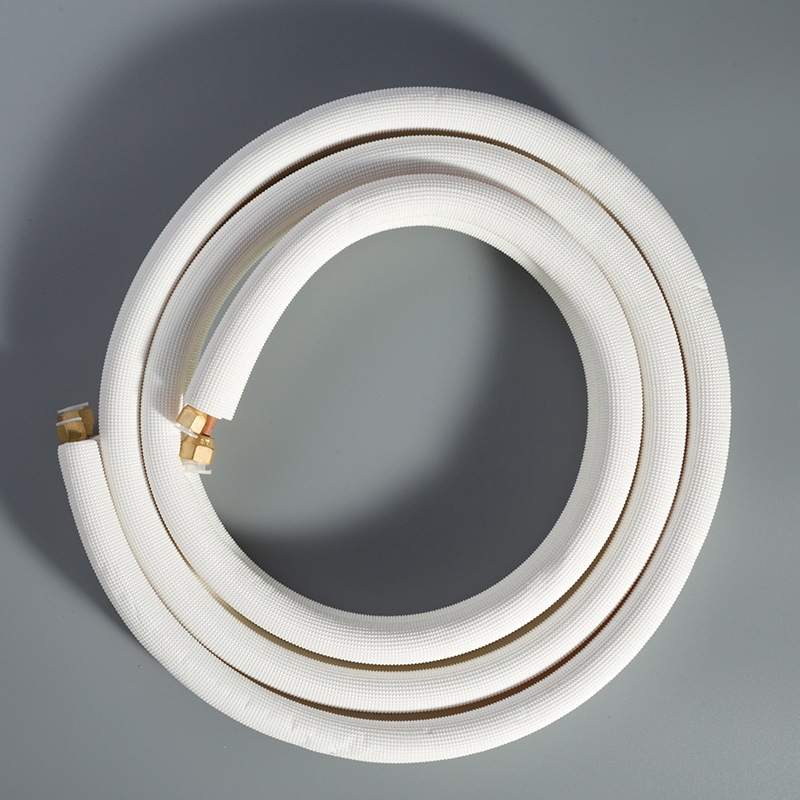Pros and Cons of Various Copper Pipe Insulation Materials

Write a 'Pros and Cons' blog post on 'Different materials for copper pipe insulation'
Insulating copper pipes is a crucial step in enhancing energy efficiency and reducing utility costs. Homeowners who insulate their pipes can save an average of $3.74 per linear foot annually. This simple yet effective measure ensures consistent water temperatures, leading to improved household energy efficiency. In this blog, we will write a 'Pros and Cons' blog post on 'Different materials for copper pipe insulation', evaluating the pros and cons of each option to help you make informed decisions for your plumbing system.
Types of Copper Pipe Insulation Materials
Foam Insulation
Foam insulation is a popular choice for insulating copper pipes. It offers excellent thermal protection, helping to maintain consistent water temperatures and prevent heat loss. Additionally, foam insulation is easy to install, making it a convenient option for homeowners looking to improve energy efficiency in their plumbing systems.
Pros of Foam Insulation
Provides excellent thermal protection
Helps maintain consistent water temperatures
Prevents heat loss effectively
Easy to install, suitable for DIY projects
Cons of Foam Insulation
Can be flammable if exposed to high temperatures
May require additional fireproofing measures for safety
Rubber Insulation
Rubber insulation stands out as a reliable option for commercial and industrial applications due to its superior thermal conductivity and high continuous operating temperature. It offers a durable solution that can withstand various environmental conditions, making it a preferred choice for demanding settings.
Pros of Rubber Insulation
Superior thermal conductivity
High continuous operating temperature
Durable and long-lasting
Suitable for demanding environments
Cons of Rubber Insulation
May be more expensive compared to other materials
Requires professional installation for optimal performance
Fiberglass Insulation
Fiberglass insulation is known for its durability and ability to withstand high temperatures. It provides effective thermal protection for copper pipes, ensuring minimal heat loss and improved energy efficiency. Fiberglass insulation is a versatile option that can be used in various settings, offering reliable performance over time.
Pros of Fiberglass Insulation
Durable and long-lasting
Withstands high temperatures effectively
Provides excellent thermal protection
Versatile and suitable for different applications
Cons of Fiberglass Insulation
May not be as flexible as rubber insulation
Requires careful handling during installation
Reflective Foil Insulation
Reflective Foil Insulation is a unique option for insulating copper pipes, offering specific advantages and disadvantages worth considering.
Pros of Reflective Foil Insulation
Reflective foil insulation effectively reduces heat transfer, helping maintain consistent temperatures in copper pipes.
It minimizes radiant heat loss, contributing to improved energy efficiency in plumbing systems.
The installation process is relatively simple and quick, making it a convenient choice for homeowners.
Reflective foil insulation is durable and long-lasting, providing lasting thermal protection to copper pipes.
Cons of Reflective Foil Insulation
This type of insulation may be less effective in extreme cold conditions compared to other materials.
Reflective foil insulation might require additional support or sealing to ensure optimal performance.
Homeowners should consider the cost-effectiveness of reflective foil insulation compared to other options available in the market.
Mineral Wool Insulation
When it comes to insulating copper pipes, Mineral Wool Insulation offers its own set of advantages and disadvantages that are essential to evaluate.
Pros of Mineral Wool Insulation
Mineral wool insulation provides excellent thermal protection, reducing heat loss and maintaining water temperatures efficiently.
It is known for its fire-resistant properties, adding an extra layer of safety to plumbing systems.
Mineral wool insulation is highly versatile, suitable for various applications beyond just copper pipe insulation.
This type of insulation offers good acoustic properties, reducing noise transmission through the pipes.
Cons of Mineral Wool Insulation
Homeowners should be aware that mineral wool insulation can be pricier than some other materials on the market.
Installation might require professional assistance due to the specific handling requirements of mineral wool insulation.
While effective, mineral wool may not be as widely available as other more common types of pipe insulation materials.
In conclusion, evaluating the pros and cons of different materials for copper pipe insulation is crucial for making informed decisions. Mineral Wool Insulation and Fiberglass Insulation stand out for their durability and thermal performance, offering cost-effective solutions for various applications. Combining Mineral Wool with Multifoil Insulation enhances efficiency at a reduced cost, providing improved U-values and acoustic performance. Reflective insulation plays a vital role in enhancing energy efficiency by reducing heat loss effectively. Homeowners should carefully consider these factors to ensure optimal performance and long-term cost savings. Assess your specific needs and consult professionals for the best insulation choice.
See Also
Exploring Optimal Insulation Solutions for Copper Piping
Essential Insulation Varieties for Copper Piping Knowledge
The Environmental Advantages of Copper Over PVC Piping


